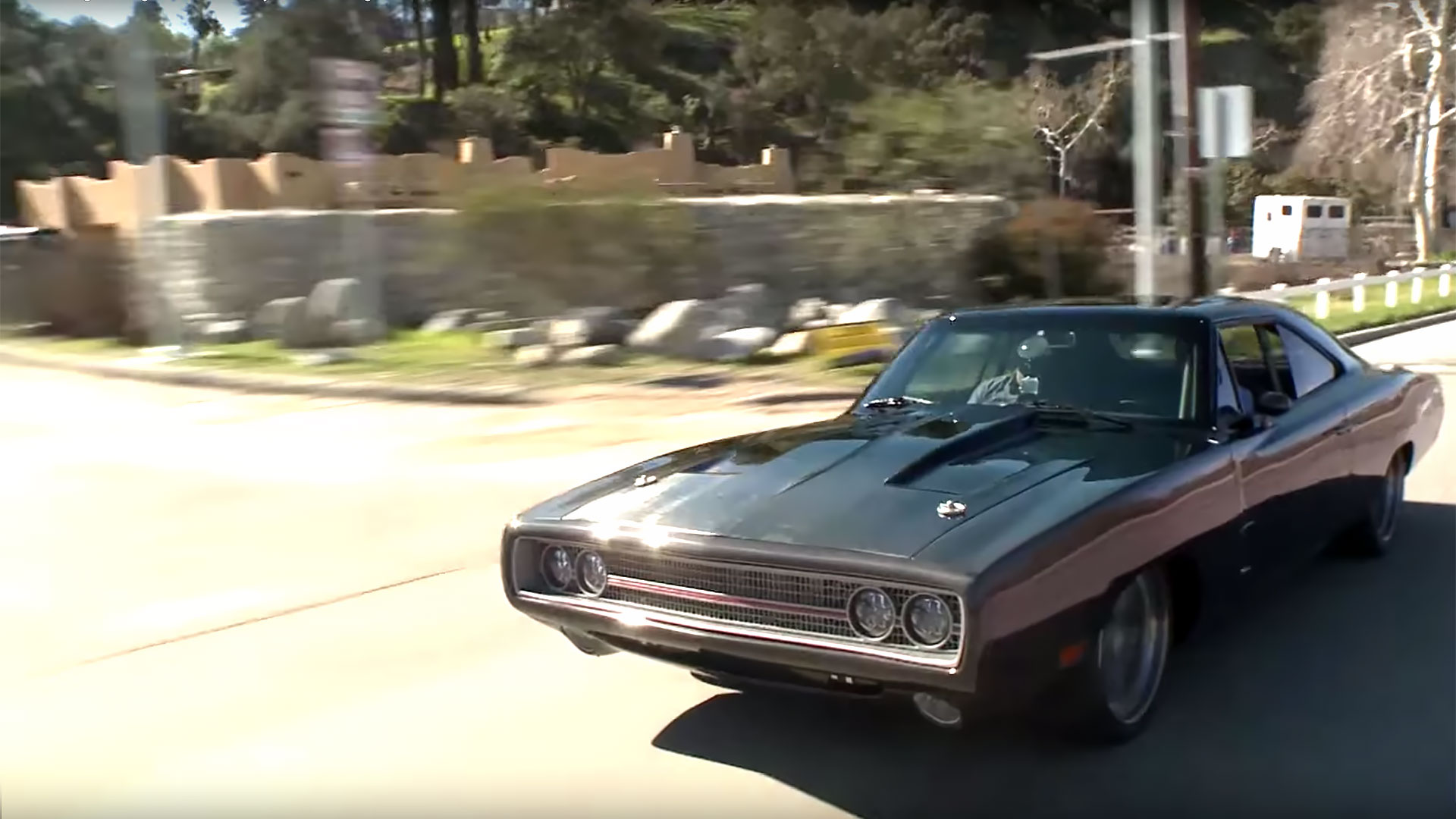

In 1970, Dodge debuted a 440 Six Pack engine option for the Charger. It featured three two-barrel carburetors and turned out 390 horsepower. Not too shabby, considering the era. But you’d need more than four Six Pack powerplants to equal the earsplitting, 1650 hp Offshore racing motor lurking under the hood of this one-off Charger Tantrum. The heroes who wedged a speedboat motor into Chrysler’s land boat to turn it into a sleek B-body rocket are Wisconsin-based tuners SpeedKore Performance, and they brought the black beauty to Jay Leno so he could walk through the build.
The Charger had great original body lines, and that’s something designer Sean Smith wasn’t interested in changing. Despite the heavy modifications, this monster still looks mostly original. They added carbon fiber everything, starting with a custom fabricated hood (raised a bit for clearance and function) and front fenders which subtly transition from the distinguished carbon weave into full black as they meet the rest of the car body. While Smith concedes aluminum still has it’s place, the advances in producing carbon fiber mean it’s more affordable and easier to form than ever. “You want to go fast, stop fast, and look good while doing it, you want carbon,” Smith rightly tells Leno. The back bumper was also carboned out, and a tail light swap from a late model Challenger gives the Tantrum distinctive hindquarters.
The interior is custom and also drenched in carbon. There’s a period-correct pistol grip shifter, which sits pretty atop a Tremec 256 six-speed transmission. That’s mated to one mother of an engine: a Mercury Marine 9-litre, 552 cu in, with twin 94mm turbochargers. Engine builder Dave Salvaggio notes the largest challenge was how to keep that monster cool, since in its natural habitat the radiator would be a boatable body of water. The team added an oversized radiator to ensure the Mercury won’t overheat. They also purposefully added turbo lag of two seconds. “We found that with this much power, we’d floor it while going 80 mph and the rear tires would spin,” Salvaggio says. Pure savage.
Driving it, Leno is fearful of sinking the gas pedal to the floor, repeatedly remarking how easy it would be for the Tantrum to live up to it’s moniker by breaking free and wreaking havoc on the road—not least of all because the car is devoid of any computerized safety systems. Leno keeps it between 4,000 and 6,000 revs and still has to shout over the deafening noise in the cabin. But he says it’s comfortable even at speed on the highway. The clean dash, with custom gauges, is sparse, missing a radio. “The sound system is in the motor,” Smith smirks. Just before the episode concludes, Leno turns the wheel over to Salvaggio who is willing to tear that rear end loose in an insane burnout. Thanks for that, Salvaggio—the video would have been a tease without some proper tire smoke.
